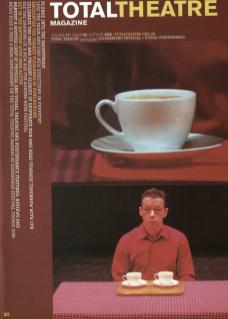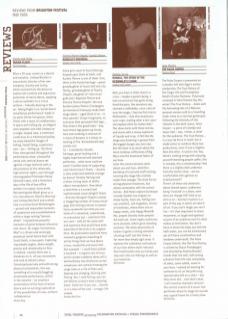The False Corpse is presented as a double-bill with Zygo's earlier production, The True History of the Tragic Life and Triumphant Death of Julia Pastrana. Previously reviewed in Total Theatre (by this writer), The True History... deals with the harrowing tale of a Mexican peasant woman sold to a travelling freak-show as a carnival grotesque. Following the intensity of this ‘theatre in the dark' piece, False Corpse – a piece of comedy and music hall – was, I think, a relief for the audience. The True History is a tour de force in itself, but it made sense to combine these two productions, even if one is slighter than the other. It said to me: hey, there's nothing wrong with enjoying yourself watching people suffer, this is comedy, this is showmanship! And there is a slightly dark undertow from the earlier show – are we comfortable with ugliness as entertainment? There's all these old chestnuts about shared space, audiences being involved in a show, even does art change life? And so on and so on – but hey! Humour is a part of the way in which we take it all on. If you can't laugh you can't live – it's that important to share enjoyment, to laugh and applaud as part of an audience and it's what makes us feel better. You don't have to throw the baby out with the bath water, you can be entertained yet still have uncertainties and shadows underneath. The False Corpse (which, like The True History, is written by Shaun Prendergast and directed by Andrea Brooks) treads that line well, with strong presence from the cast and plenty of jokes, some subtle, some in your face. I waited all evening for someone to sit on the pink icing layered cake left on a chair – but they never did... now that's what I call inventive dramatic tension! The central conceit of a music hall performer about to stage his suicide was a good frame for a lively show.

